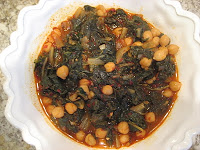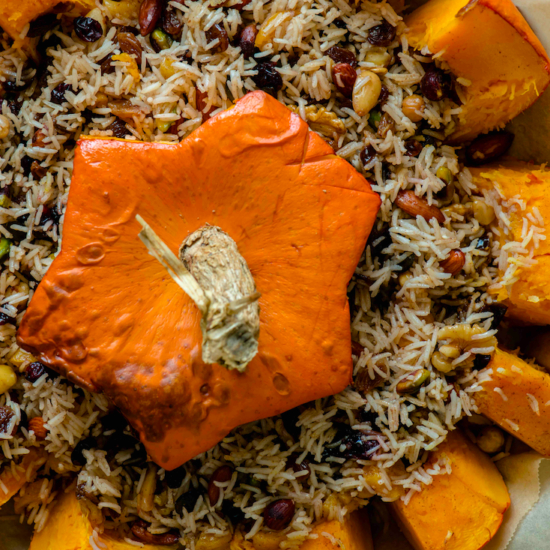It never hurts to re-post a timely recipe, so in case you missed Ara Kassabian’s recipe
for Swiss Chard with Chick Peas (Neeveeg, Nevik) from a few years ago, here it is again – and just (barely) in time for Armenian Christmas Eve, January 5th.
for Swiss Chard with Chick Peas (Neeveeg, Nevik) from a few years ago, here it is again – and just (barely) in time for Armenian Christmas Eve, January 5th.
Swiss Chard with Chick Peas (Neeveeg, Nevik)
Ingredients:
1 bunch swiss chard (green or mixed), thoroughly
washed to remove grit and sand
washed to remove grit and sand
1 (15-oz.) can chick peas, drained and
rinsed
rinsed
2-3 tablespoons of tomato sauce
1-2 tablespoons of extra virgin olive
oil
oil
Salt (very little),
black pepper, Aleppo red pepper or
equivalent (cayenne, chili Colorado, etc.), to taste
equivalent (cayenne, chili Colorado, etc.), to taste
Directions:
1. Wash and coarsely chop the chard. Make sure you get all the dirt out.
2. Heat the oil over medium-high heat and saute the chard until it is limp. Add the
chickpeas, tomato sauce, salt and peppers.
chickpeas, tomato sauce, salt and peppers.
3. Cover and simmer on low heat until the chard is soft, about 20-30 minutes.
Ara’s Notes:
As a variant, you can substitute some ready-made ajika (Georgian tomato-pepper paste) for part of the tomato sauce. In which case, you can omit the Aleppo red pepper.
Swiss chard tends to be high in sodium, and of course canned chickpeas also have sodium, so go easy on the salt.
Nevik is traditionally eaten on Christmas Eve (January 5th), along with rice, fish, and yogurt soup (madzoonaboor).
From our Armenian Kitchen
to yours…
to yours…
Shnorhavor Nor Dari yev Soorp Dznount
(Visited 868 times, 1 visits today)





At this occasion, in the region Zeitun, they used to prepare LELIG ABUR with the same greens nevik.
here is a short explanation from my article printed in the website http://www.houshamadyan.org
Holy Christmas (Dzeanunt, Surp Dzunt)
The time from December 29 until January 5 is a fasting period. On January 5th all the members of the household punctually attend church, to take part in the Mass and the Christ Child’s baptism (Blessing of the Waters). Each believer is blessed by drinking some of the water that has been blessed and, when they return home they take a little of it with them.
The fast ends by eating fried dry nuvig (wakerobin, a wild vegetable), recalling that Christ was born in a stable and the Holy Mother of God surrounded Him with that vegetable’s leaves. Then they each drink three cups of their house oghi (raki) and feast on sacrificed meat and broth, rice-soup, fried eggs, yogurt curds, butter and honey.
Lelig soup
Ingredients
1 kg (2.2 lb) nuvig panchar*
1 cup de-husked wheat (dzedzadz)
2 onions
2 cloves garlic
2 soup spoons flour
2 soup spoons sumach
1 teaspoon each of red and black pepper
Salt
Preparation
This must be prepared the day prior to serving.
Mix and knead the flour and sumach with water and leave to turn bitter. Wet the chopped nuvig, de-husked wheat, spices and bitter dough in hot water the night before serving. Cook on the day it is to be served, adding the chopped onions and chopped garlic.
*A mountain vegetable (arum maculatum), whose name translates as ‘friar’s cowl’ or ‘wakerobin’ that is like spinach.
My soon to be "gelin" (who is not Armenian) made this today and writes, "Thank you for the recipe! It was very good!"
As a variant, I suggest using a scant tablespoon of tomato PASTE (rather than sauce) and a small teaspoon of pepper paste. I find that the tomato paste gives it more of a concentrated flavor.
lovely recipe, thanks for sharing.
We're so glad you like it! Thanks go to Ara for submitting it.
Don’t u put onions in the nevik?
There's no rule against it, so I'd say, if you like onions, by all means, add them. Personally, I love onions and put them in almost anything! 🙂